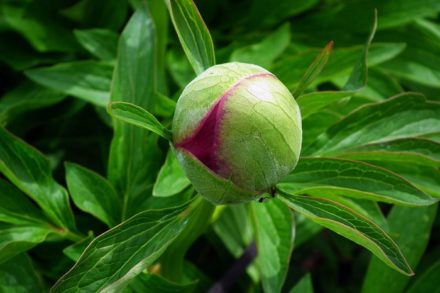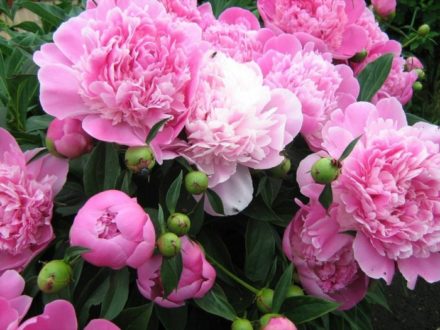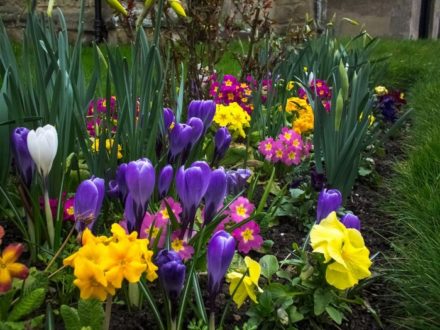The end of summer is the ideal period for peonies to propagate. Healthy 5-year-old plants with a strong root system are suitable for division. A weak bush will not be able to produce strong shoots, and replanting older peonies is difficult. Their roots go into the ground to a depth of 80 cm and become too thick and brittle.
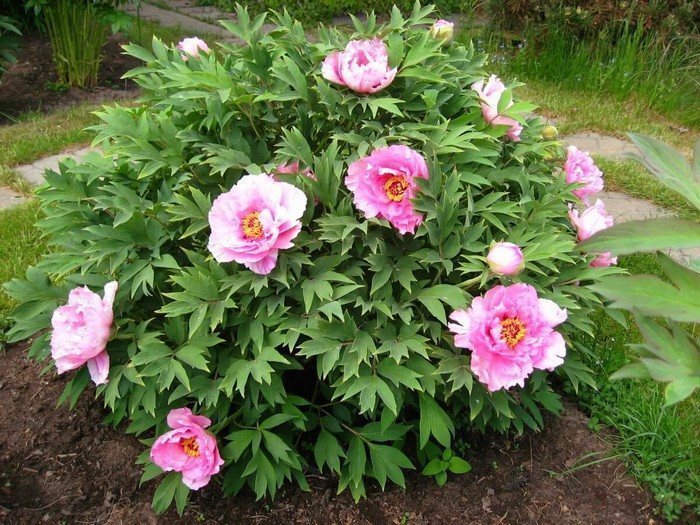
Dividing a peony bush is not difficult if you remember simple tips from experienced gardeners.
Landing dates
Peonies are rejuvenated at least once every 5–7 years. The older the bush, the more actively it grows green mass, flowering fades, and woody shoots appear in the root space.
Spring is not the best time to divide a peony. The planting material does not have time to take root. The seedling produces many side shoots and grows green mass, which ultimately leads to weakening and death of the bush.
From the 15th to the 25th of August, the active growth phase of the peony ends, and the formation of lateral roots slows down. There is a short period of rest. At the same time, increasing air humidity, coolness and the absence of sudden temperature changes have a beneficial effect on the rooting of young plants. This is the best time to dig up flowers.
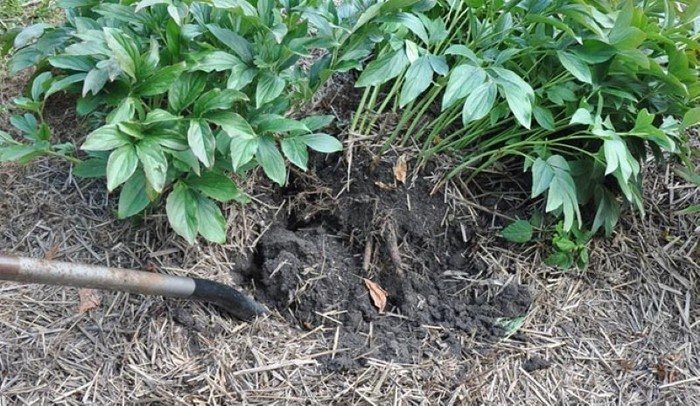
From mid-September, the peony begins to actively prepare for wintering, grows side shoots, and stores water. At this time, it is better not to touch the bush.
Preparation of the bush
5–7 days before division, the bush stops watering and the flower stalks are removed. Then:
- Before digging, all stems are shortened to a height of 20 cm, and the foliage is removed.
- Carefully examine the mother plant, assess the presence of pests and diseases. If signs of damage are found, the bush is treated. Division is postponed until next season.
- The bush is dug to a depth of 0.5 m, the roots are carefully exposed.
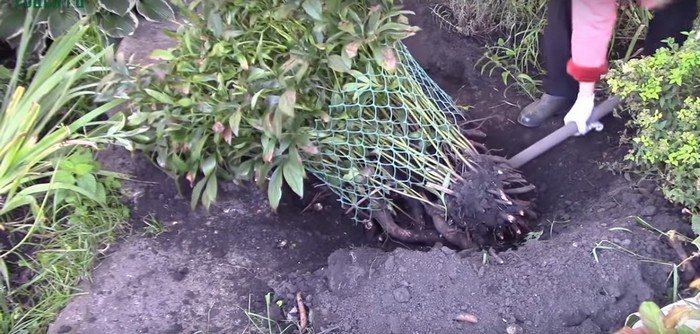
The peony is removed from the ground, the rhizome is washed with running water, and the remaining soil is removed.
Root preparation
The roots of an adult peony are brittle and fragile, they are strongly intertwined. To avoid damage, leave the dug bush in a dark, well-ventilated place for 5–7 hours. The roots become more flexible.
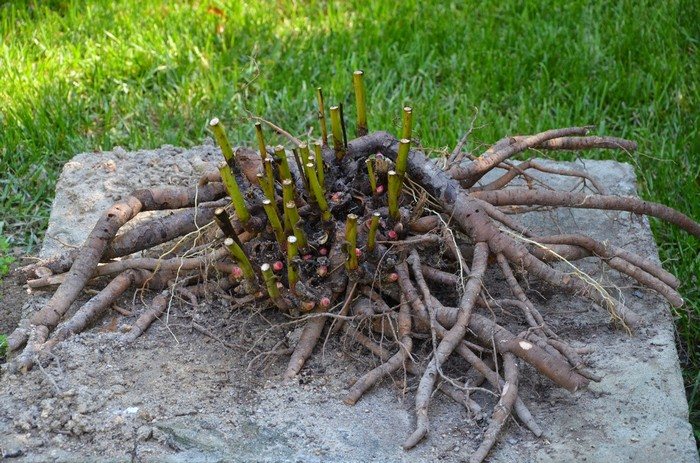
Damaged or diseased parts of the rhizome are removed with pruning shears. The cut areas are sprinkled with charcoal. Additionally, to protect against diseases and pests, planting material is treated with a weak solution of potassium permanganate.
Peony division
To divide a peony, use a stake or wedge:
- The tool is carefully driven into the rhizome in a place where damage to the shoots will be minimal. The plant is divided in half.
- Each part is cut into 2–6 divisions with a sharp knife, depending on the size of the mother bush. Each plant leaves 2-3 green buds and a sufficient number of strong roots.

Among the cuttings, the best samples with elastic roots, up to 3–4 mm in diameter and large buds are selected.
Soil for planting
The main rule for planting peonies: the simpler the soil composition, the better for the plant. The soil does not require special preparation or large amounts of fertilizer. The best composition: ordinary garden soil combined with a small amount of nutritious humus.
To plant peonies, prepare a spacious planting hole up to half a meter deep. The bottom is filled with a layer of broken bricks and sprinkled with river sand on top. Depleted clay soil is enriched with superphosphate (200 g per 1 planting hole) and ash (200–300 g). Fertilizers are mixed with the soil, left for 3-5 days, and then flowers are planted.
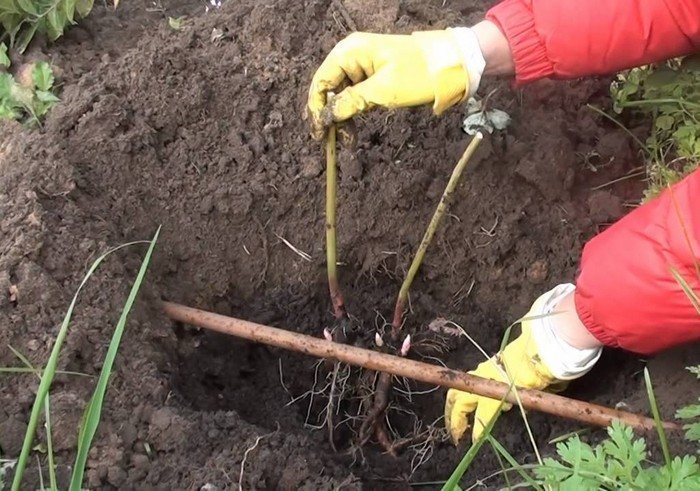
It is important to ensure that the root collar is not buried. The buds should be at ground level.
In autumn, to protect against frost, young seedlings are sprinkled with a dense layer of peat. In the spring, the shelter is raked to prevent the roots from becoming trapped.
Dividing a bush is one of the easiest and safest ways to propagate flowers. It does not require special skills or knowledge and is easily tolerated by the plant. The correct choice of time for transplantation, root treatment and soil preparation will be the key to the health of young peonies.



